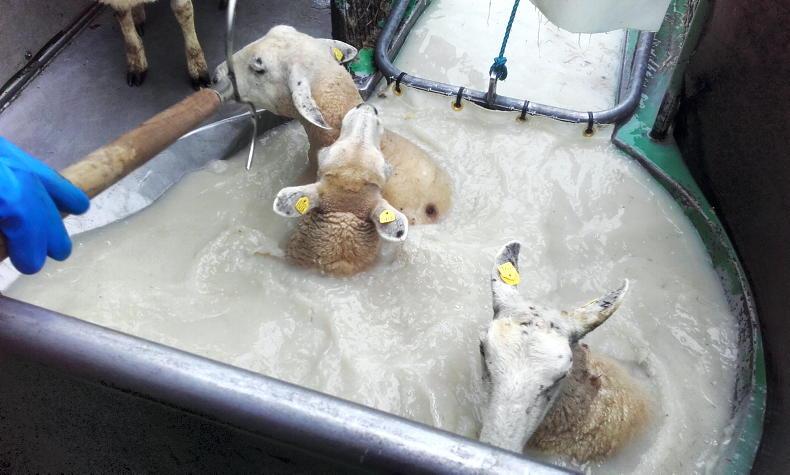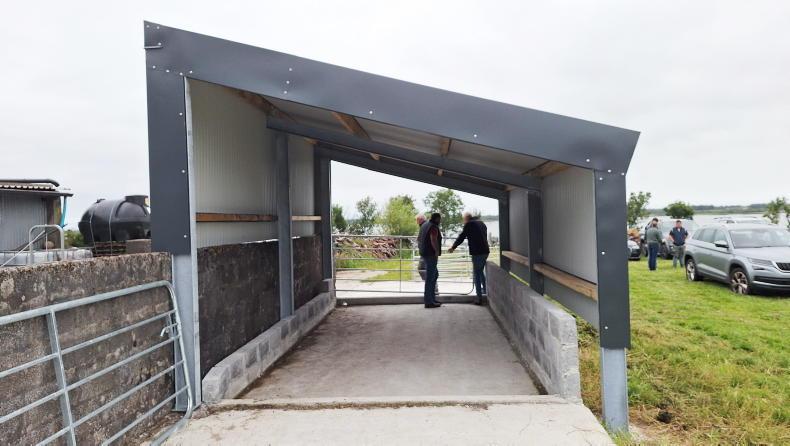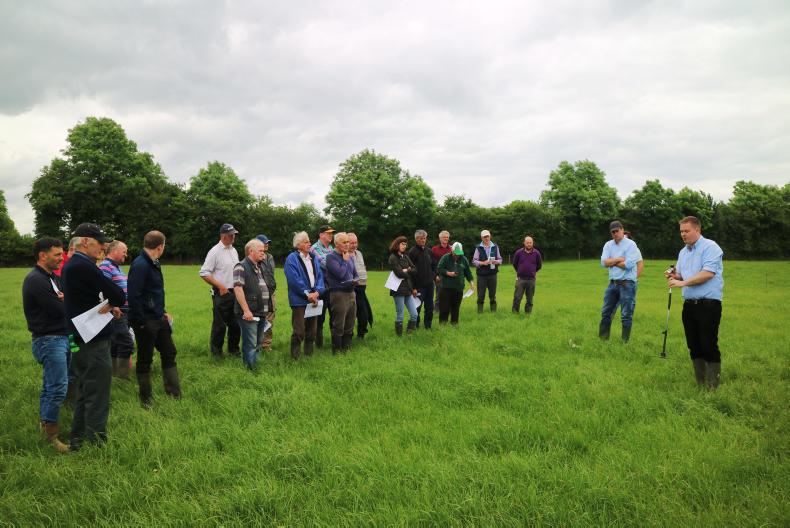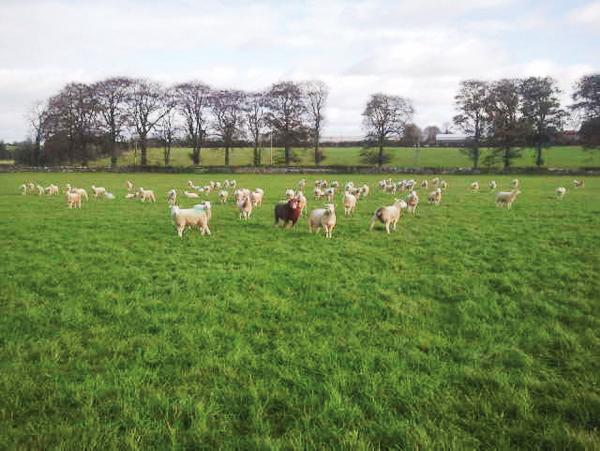Early lambing was a big topic of discussion at the recent open day on the farm of Teagasc BETTER farm sheep programme participant John Doyle, Wexford. We spoke with programme adviser Ciaran Lynch to gain an insight into lessons coming from the programme and key factors farmers should take into account.
According to Ciaran, the underlying reasons for the three flocks in the programme continuing with an early lambing aspect to their production system is the potential for improved cashflow and better use of available facilities.
He explained that the first task in putting a plan in place for early lambing systems was to take a critical look at returns from the enterprise and also how it fits into the overall farming system.
Reviewing the system
Reviews of the production system actually lead to a number of sheep-only flocks reverting to all mid-season lambing. Ciaran said that these flocks were lambing in February and did not really have a defined lambing season.
With such a system, he says there is a risk of a drawn-out lambing period (due to lower conception rates from natural mating out of season) and costs escalating.
Moving the lambing date from early February to late February/early March has improved conception rates on these farms and lowered production costs (no meal feeding post-lambing) with the lambing date planned to coincide with natural grass growth.
There are exceptions to this. For example, where there is also a suckler herd on the farm, February lambing suits, as lambs are drafted in line with grass demand increasing from aging weanlings.
Defined system
Ciaran said that defining an early lamb production system involves setting targets for the farm. Once a plan is made, it should be adhered to, he said.
He recommends setting aside or apportioning a percentage of the farm to the system and sticking with this. This ensures that other enterprises on the farm are not affected. There also needs to be scope to have a backup plan in place.
Using the example of John Doyle, his sheep flock is split approximately into 150 early-lambing and 150 mid-season lambing ewes, along with 100 yearling lambing hoggets.
The three systems work well together in balancing cashflow but another major advantage of the system is that it allows close to 400 sheep to pass through facilities capable of handling 200 to 250 sheep at any one time.
This spring, John set aside a 10ha block of land for grazing ewes and lambs post-grazing. The system started off brightly, but after a few weeks, poor grass growth and inclement weather meant grass reserves were quickly depleted with an absence of grass regrowth to sustain grazing of ewes and lambs.
After considering the options available, a decision was taken to wean lambs early (eight weeks of age). This allowed ewes to be tightened up and supplemented with fodder and lambs supplemented with meal on the remaining grass supplies.
Had this option not been selected, it would have resulted in all grass supplies being depleted, ewe milk yield suffering and higher levels of meal feeding to ewes and lambs.
On the Kerry BETTER farm, heavy rainfall meant ewes and lambs had to be retained indoors, with a similar decision also taken to wean lambs and finish intensively on meals. The point demonstrated by Ciaran is the importance of having a proper plan in place.
The main tips outlined by Ciaran for early lambing flocks are summarised below.
Have a defined plan and stick to it.When doing budgets for the system, use realistic figures. Conception rates for sponged ewes are likely to range between 70% and 80%, while lambs will consume on average from 50kg to 70kg meal. Of course, this depends on the year and it is not rare for volumes fed rising to 80kg to 90kg in a very bad year or where lambs are fed ad-lib meals from an early age. Early lambing may not necessarily reduce labour or pressure on facilities. With conception rates of 70% to 80%, there will be a high volume of ewes lambing in a very short period of time.Have emergency penning or extra space available if possible. Each lamb that needs to be housed in group penning will require 0.3m2 (3.3ft2).Mature ewes respond best to early lambing. Consider selecting ewes that need to be culled following weaning. This will reduce grass demand as the year progresses. Consider sire selection closely. If lambs are likely to be exposed to harsher conditions, select a sire that will breed hardy characteristics into lambs. Terminal sires work best in the system. Where grass growth is naturally late or the potential to build a grass surplus or graze early in the year is questionable (poor underfoot conditions), then the system runs the risk of being very high-cost and should be avoided. There are no hard and fast rules for every farm. There are systems that suit farms and not others. The main thing is that a plan is in place to maximise performance.
Early lambing was a big topic of discussion at the recent open day on the farm of Teagasc BETTER farm sheep programme participant John Doyle, Wexford. We spoke with programme adviser Ciaran Lynch to gain an insight into lessons coming from the programme and key factors farmers should take into account.
According to Ciaran, the underlying reasons for the three flocks in the programme continuing with an early lambing aspect to their production system is the potential for improved cashflow and better use of available facilities.
He explained that the first task in putting a plan in place for early lambing systems was to take a critical look at returns from the enterprise and also how it fits into the overall farming system.
Reviewing the system
Reviews of the production system actually lead to a number of sheep-only flocks reverting to all mid-season lambing. Ciaran said that these flocks were lambing in February and did not really have a defined lambing season.
With such a system, he says there is a risk of a drawn-out lambing period (due to lower conception rates from natural mating out of season) and costs escalating.
Moving the lambing date from early February to late February/early March has improved conception rates on these farms and lowered production costs (no meal feeding post-lambing) with the lambing date planned to coincide with natural grass growth.
There are exceptions to this. For example, where there is also a suckler herd on the farm, February lambing suits, as lambs are drafted in line with grass demand increasing from aging weanlings.
Defined system
Ciaran said that defining an early lamb production system involves setting targets for the farm. Once a plan is made, it should be adhered to, he said.
He recommends setting aside or apportioning a percentage of the farm to the system and sticking with this. This ensures that other enterprises on the farm are not affected. There also needs to be scope to have a backup plan in place.
Using the example of John Doyle, his sheep flock is split approximately into 150 early-lambing and 150 mid-season lambing ewes, along with 100 yearling lambing hoggets.
The three systems work well together in balancing cashflow but another major advantage of the system is that it allows close to 400 sheep to pass through facilities capable of handling 200 to 250 sheep at any one time.
This spring, John set aside a 10ha block of land for grazing ewes and lambs post-grazing. The system started off brightly, but after a few weeks, poor grass growth and inclement weather meant grass reserves were quickly depleted with an absence of grass regrowth to sustain grazing of ewes and lambs.
After considering the options available, a decision was taken to wean lambs early (eight weeks of age). This allowed ewes to be tightened up and supplemented with fodder and lambs supplemented with meal on the remaining grass supplies.
Had this option not been selected, it would have resulted in all grass supplies being depleted, ewe milk yield suffering and higher levels of meal feeding to ewes and lambs.
On the Kerry BETTER farm, heavy rainfall meant ewes and lambs had to be retained indoors, with a similar decision also taken to wean lambs and finish intensively on meals. The point demonstrated by Ciaran is the importance of having a proper plan in place.
The main tips outlined by Ciaran for early lambing flocks are summarised below.
Have a defined plan and stick to it.When doing budgets for the system, use realistic figures. Conception rates for sponged ewes are likely to range between 70% and 80%, while lambs will consume on average from 50kg to 70kg meal. Of course, this depends on the year and it is not rare for volumes fed rising to 80kg to 90kg in a very bad year or where lambs are fed ad-lib meals from an early age. Early lambing may not necessarily reduce labour or pressure on facilities. With conception rates of 70% to 80%, there will be a high volume of ewes lambing in a very short period of time.Have emergency penning or extra space available if possible. Each lamb that needs to be housed in group penning will require 0.3m2 (3.3ft2).Mature ewes respond best to early lambing. Consider selecting ewes that need to be culled following weaning. This will reduce grass demand as the year progresses. Consider sire selection closely. If lambs are likely to be exposed to harsher conditions, select a sire that will breed hardy characteristics into lambs. Terminal sires work best in the system. Where grass growth is naturally late or the potential to build a grass surplus or graze early in the year is questionable (poor underfoot conditions), then the system runs the risk of being very high-cost and should be avoided. There are no hard and fast rules for every farm. There are systems that suit farms and not others. The main thing is that a plan is in place to maximise performance. 










SHARING OPTIONS